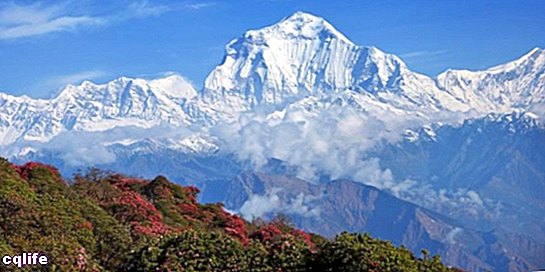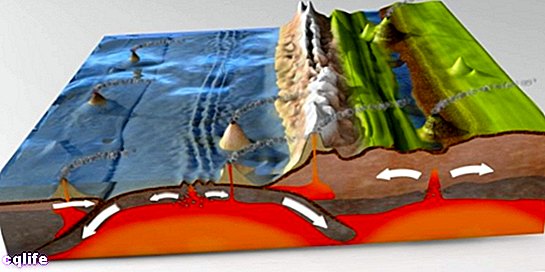We explain what orogenesis is, what types of reliefs it forms, its phases and types. Also, how plate tectonics intervene.

What is orogenesis?
Orogenesis is the type of process geological that usually form the moutains Y mountain ranges on the earth's surface. This occurs when two tectonic plates they meet and one of them, of continental crust, fractures and wrinkles on itself, generating widening and folding that, from our perspective, are mountains.
Orogenesis also includes certain movements magmatic that throw new material to the surface, especially of a granite type. But this generally produces orogenic belts, which are elongated and parallel strips of rock, which exhibit very similar characteristics throughout the whole, and occur especially in subduction zones and volcanic zones.
This phenomenon occurs because one of the two plates submerges back into the mantle, below the crust of the other, suffering the physical effects of the heat, the Pressure and the gravity that modify their structure underground.
However, orogenesis is a long and slow process, which occurs according to three phases or stages:
- Folding. In that the soft elements of both plates collide with each other and form folds or deformations in the crust.
- Failure. That is, production of failures, when the materials of greater hardness exert pressure and the folds are broken.
- Thrust When one plate moves over or under the other.
This process is very important for the diversification of the relief of the Earth crust and the renewal of mountain ranges. In fact, the earth's crust is considered a living entity, in the sense that, given enough time, it will change and rearrange itself, and where there were valleys there may be mountains, or vice versa.
Types of orogenesis

We can distinguish two different forms of this process:
- Symmetric orogenesis. One that involves two continental plates, which are compressed together due to a depression in the earth's crust, between two masses that approach each other. Such is the case of the mountain ranges of the Alps or the Himalayas, for example.
- Asymmetric orogenesis. That which involves a continental and an oceanic plate, the latter being below the former, in such a way that sediments accumulate in the subduction zone. Such is the case of the Andes mountain range, or that of the Rockies.
